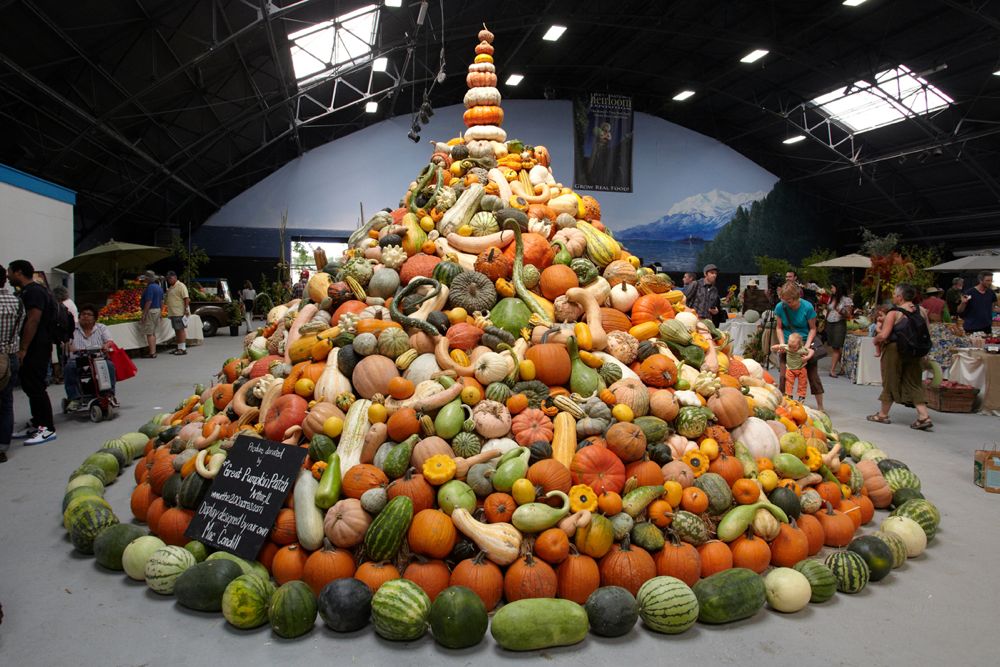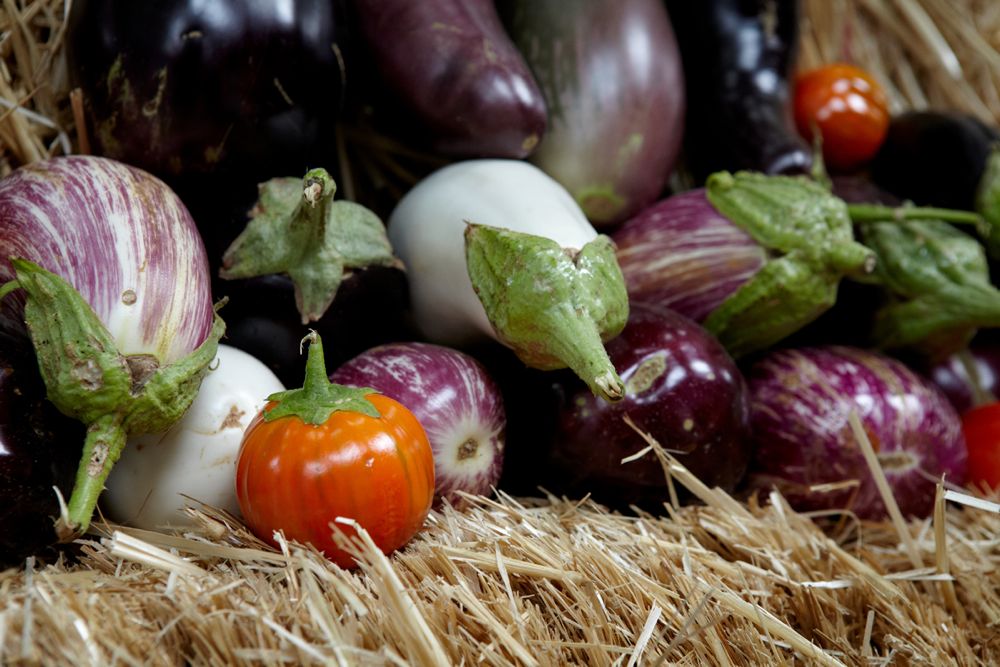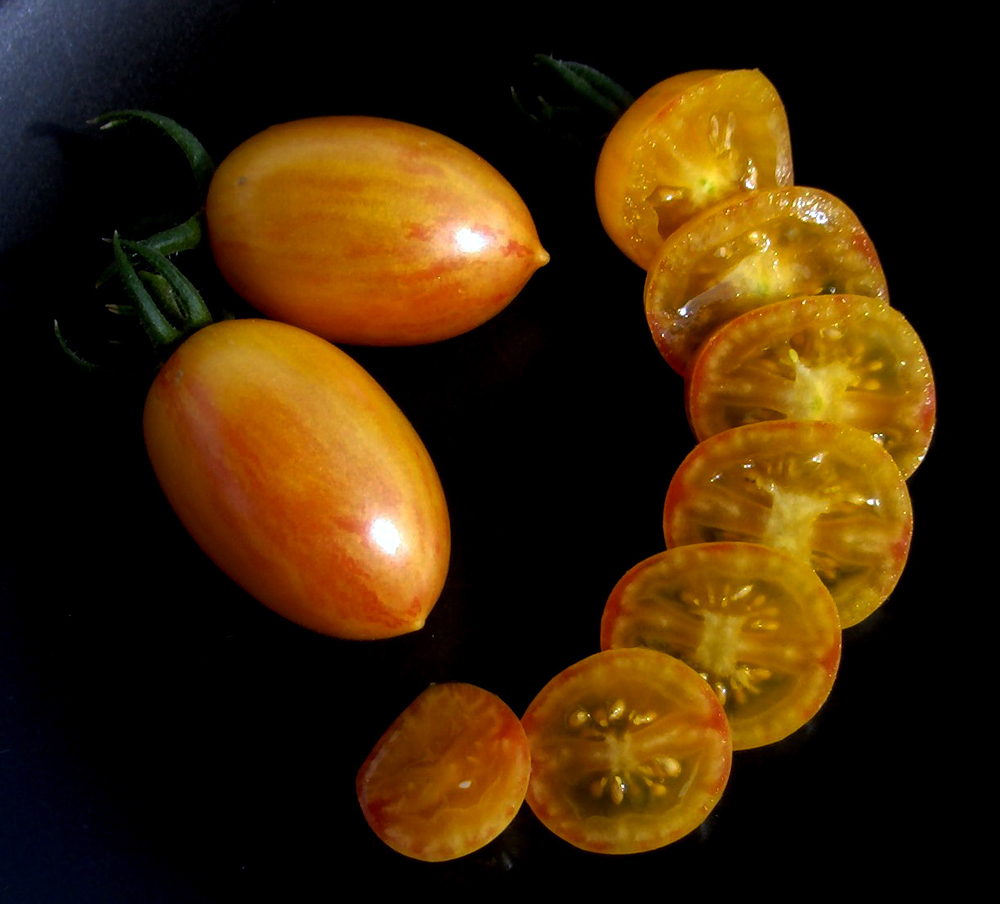
Blush Tomato by Fred Hempel. Photo: Fred Hempel at Baia Nicchia.
By crossing two or more varieties of heirlooms, plant breeders, farmers and gardeners can search for their version of the perfect tomato. Fred Hempel, owner of Baia Nicchia, is an organic farmer and plant breeder. He has been working with the company Seeds of Change along with chefs around the San Francisco Bay area to develop varietals, like the Blush tomato. He explained that these are not hybrids, but actually “heritage” tomatoes. “These have all of the traits one expects in an heirloom,“ said Fred Hempel said. “They are open pollinated, their offspring will be very similar to them, but they are not 50 years old.”
In fact, some tomatoes people commonly refer to as “heirloom” are also heritage, like the Green Zebra. This was developed by Tom Wagner of Everett Washington by crossing the genes of four different heirloom tomatoes. He introduced it in 1983, and so in spirit these might be heirlooms, but really, they are as he calls them, “Heritage.” The Indigo Rose, or blue tomato was recently bred by Jim Meyers and graduates students at Oregon State University. They crossed wild tomatoes with domestic ones and came up with blue-hued beauties that have the nutrients of regular tomatoes, along with anthocyanins, which also produce the healthy pigments in red wine and blueberries.
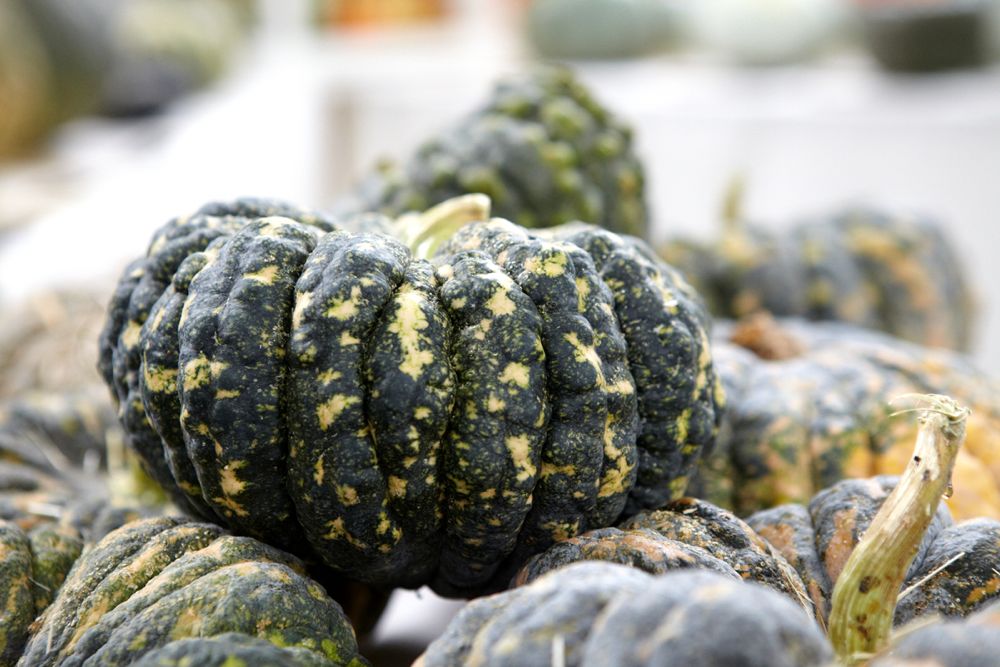
Heirloom squash. Photo: Marla Aufmuth
Indigo Rose, Blush and Green Zebra were NOT genetically engineered; rather, they were created through classical plant breeding techniques, which often means crossing wild and domesticated plants for genetic diversity. This is important, as then this diversity allows for a greater range of adaptation, especially when climate change is an issue. This can take years of work, and lots of uncertainty, as growers are working with the perimeters of nature and can’t control which genes are precisely passed down to the offspring. So there may be a year of mishaps, feral cousins, and then honing in for generations on the perfect tomato. Currently, Blush, Indigo Rose and Green Zebra seeds are for sale, and can be grown by home gardeners. Over time, they may be introduced into the pantheon of heirlooms.
Many of the tomatoes seen in grocery stores are hybrids, which means that they are genetically 50 percent each parent plant, one generation old, and though it’s possible to save the seeds and plant them, the offspring probably won’t taste as good. Many of these have been bred to look like a “perfect” tomato and have a long shelf life, but often lose flavor. The parents are often trade secrets, so farmers have to keep coming back and buying seeds. Since many have been bred for cosmetic purposes, how they taste is far less important. In fact, a recent study in Science Magazine explains that by breeding the dark green spots out of tomatoes, they in fact have less sugar and flavor.
But don’t confuse hybrids with genetically modifying a plant. Genetically engineering, or modifying means that breeders select specific traits that they want in a tomato, and insert the genes that will code those traits into the plant. The gene does not have to be from the same species. The original goal of these was to reduce diseases in crops and create greater output. This seemed like a great idea.
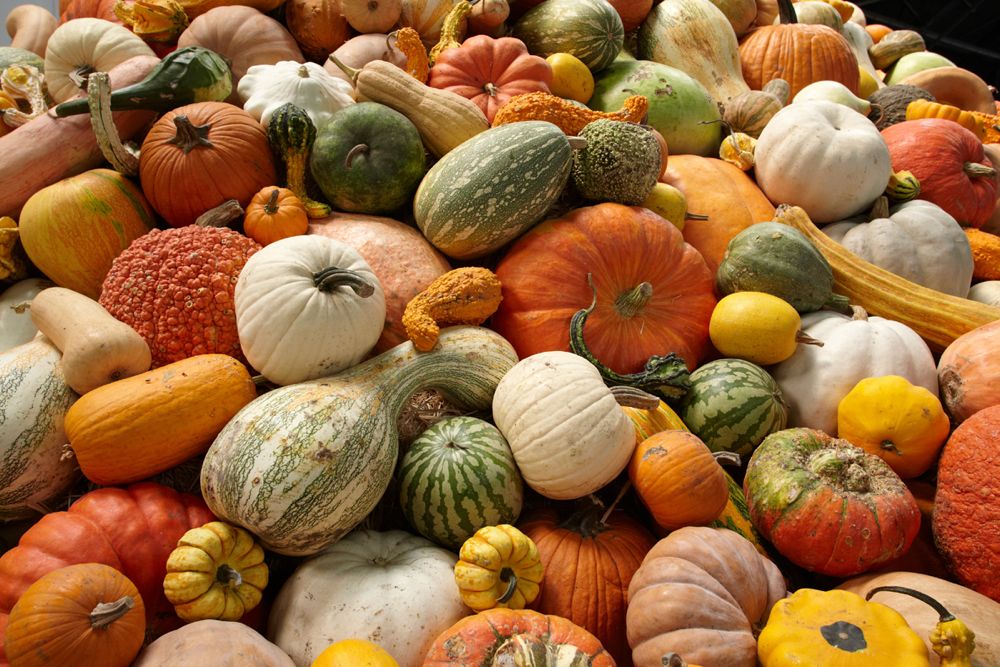
Heirloom vegetables are prized for their uniqueness, rather than uniformity. Photo: Marla Aufmuth
However, many countries have come out against the use of GMOs in food production and agriculture because they felt there were unacceptable risks to the environment and human health. These countries also considered GMOs unfair to farmers and unsustainable. While genetically modified tomatoes did appear in 1994, they disappeared just four years later. Very few food items we might find in the produce department are genetically modified. The most common genetically modified crops are corn and soybeans and these are used in processed foods and fed to livestock on industrial farms.
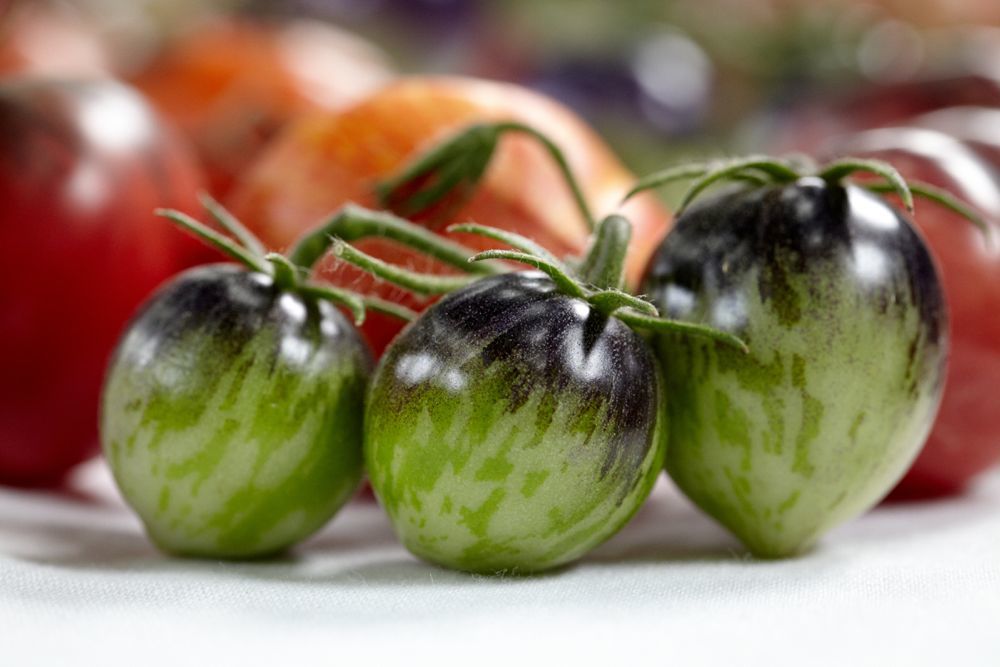
Recent studies have shown that green parts on tomatoes increase their sweetness. These have been bred out of many pure red tomatoes found in grocery stores. Photo: Marla Aufmuth
Over time, the company Monsanto has become almost synonymous with GMO, and the plants they have genetically manipulated are their intellectual property. They are usually not available to home gardeners, and when grown by farmers, it is illegal for them to save seeds to plant again. In fact, if seeds from a neighboring farm or backyard garden cross-pollinate with your crop, Monsanto can charge you for patent infringement. One of the most famous cases brought against a farmer by Monsanto is the case of Canadian farmer Percy Schmeiser who was sued by Monsanto. Listen to his story.
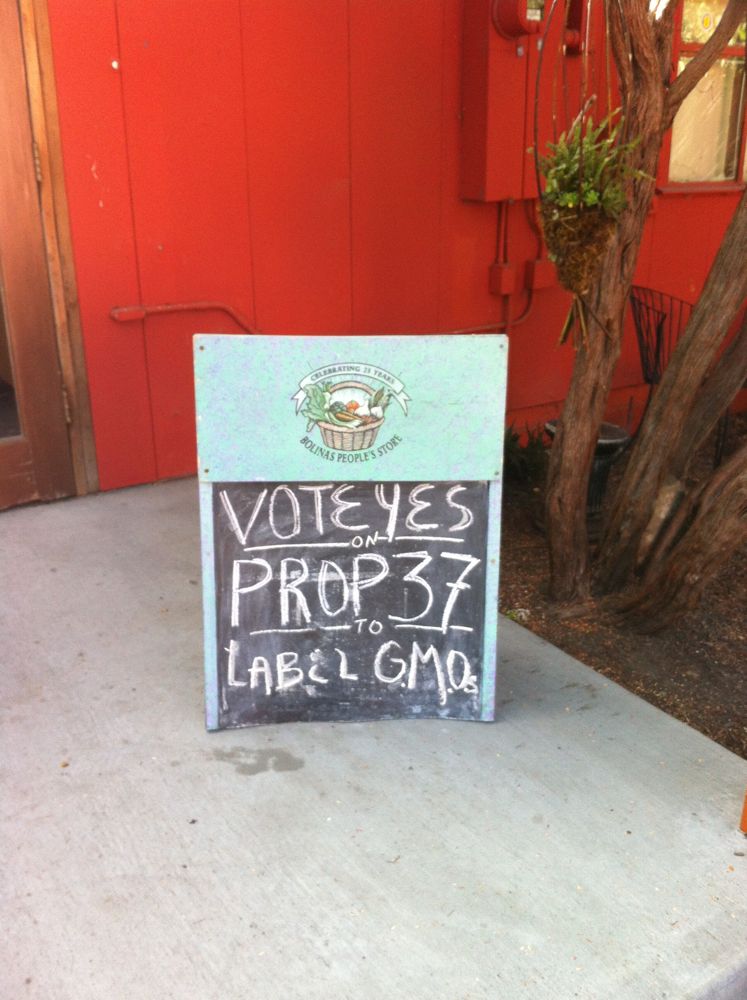
These signs are often found at farmers' markets and health food stores. The country will be watching what California decides. Photo: Maria Finn
